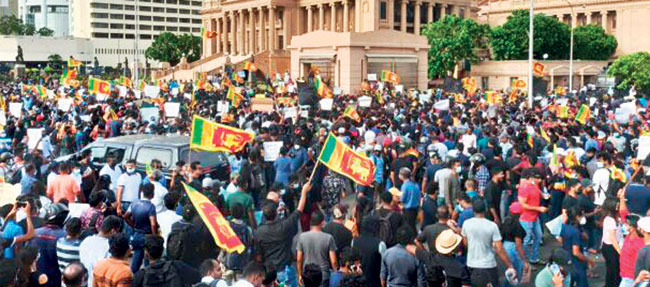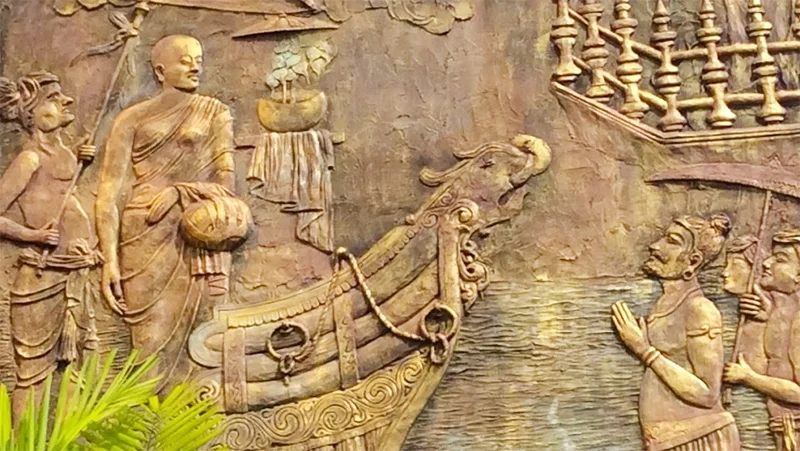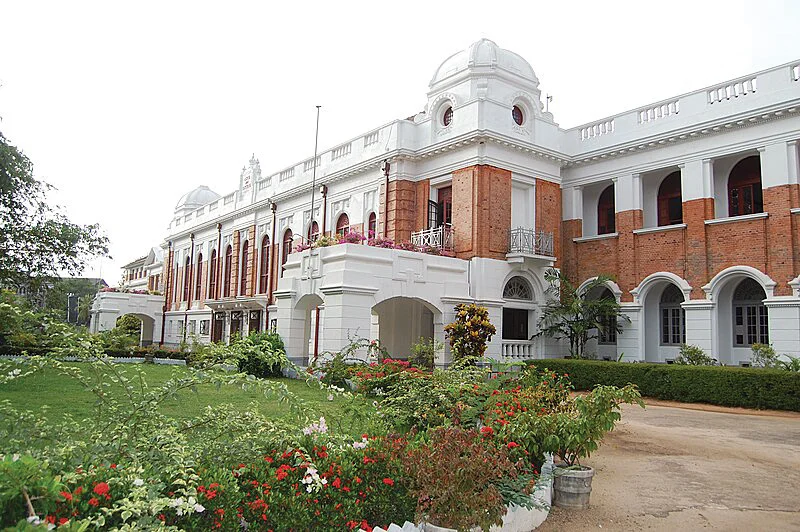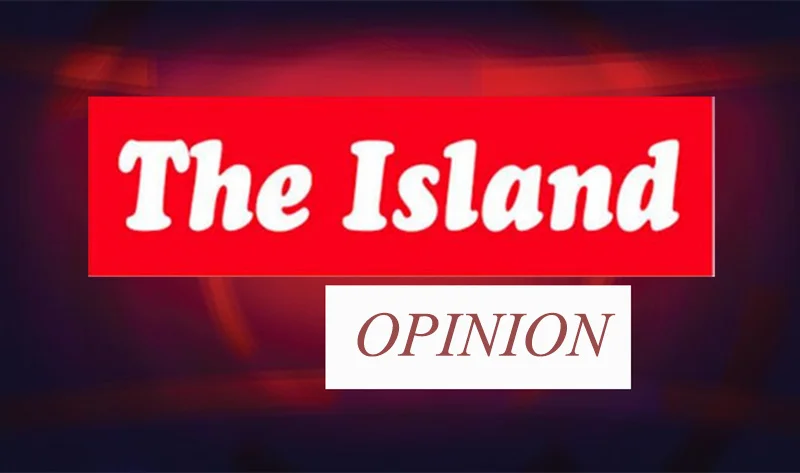Opinion
Broad coalition of protesting groups necessary

Sri Lanka is currently experiencing the worst economic crisis in its post-independence history. Foreign reserves have dangerously dwindled, incapacitating the government to import essential supplies, such as fuel, cooking gas, fertiliser, and medicine, among other things, says the Social Scentists’ Association of Si Lanka.As a result, Sri Lankans are going through unprecedented suffering. Severe shortages of almost all essential items have had a crippling effect on their daily lives. For many weeks, people across the country have been standing in long queues to obtain essentials. They are forced to suffer long hours of power cuts. The current crisis has not only disrupted people’s lives at home, but also adversely impacted the economic activities of many sectors, such as agriculture, transportation, hospitality, small businesses, and manufacturing. The livelihoods of many are teetering on the edge of collapse. Children’s education, already disrupted by the Covid-19 pandemic, has further suffered due to lack of transportation, electricity, and even writing papers. Hospitals have almost run out of essential medicines, costing lives. The crisis has reached such a high point that any corrective measure, no matter how well thought out, will take at least months to have some positive effect on people’s everyday lives.We share the public perception that the Gotabaya Rajapaksa government is primarily responsible for aggravating the financial crisis and bringing it to a head. In the backdrop of intensifying popular protest against the difficulties people face, the President and his government are fast losing legitimacy. Although economic mismanagement was the immediate cause of the current crisis, we cannot ignore the role of political institutions and processes in producing the overall crisis. Since independence they have nurtured a corrupt, authoritarian, ethnicised, dynastical, and undemocratic political culture, paving the way for the current disaster of unprecedented magnitude. Resolving the immediate economic crisis is undoubtedly a major priority. However, we believe that restoring democracy and reforming the country’s political culture are equally important and urgent, for establishing a just and fair society.
Indeed, this is the call from ordinary citizens who have been protesting over the last month, night and day, in the sunshine and rain, offline and online. The protests which started as small neighbourhood candle-light vigils about the hardships faced by people, due to the power cuts and gas and fuel shortages, have now grown into an unprecedented nationwide uprising that has crossed the ethnic divide. A number of protests have been punctuated by Iftar celebrated by Muslim participants at the protest ground. Young people, including university students, who have never been involved in any protest, are at the forefront of the agitation. This is a spontaneous citizens’ protest movement with a multi-class, multi-ethnic character. It is a culmination of a wave of protests commenced by farmers, teachers, fishermen, etc., against economic hardships a few months ago.This spontaneous uprising of people, independent of political parties, call for the removal of the Rajapaksa family and all 225 Members of Parliament. We see this call as a metaphor of the deep disenchantment shared by many citizens with the whole political class in this country. This wave of protests gives a clear message that citizens are deeply disappointed with the way in which the country’s system of democratic institutions and practices have been abused by the political elites, as well as the bureaucracy. The slogans and demands being put forward embody a thorough critique of the system, suggesting ideas and directions for far-reaching reforms and reconstructions. It is also a call for a new political culture of democracy, accountability, and integrity without political corruption. Citizens and civil society organisations, committed to Sri Lanka’s democracy, have come together to support and sustain this movement in the long term.
We unequivocally condemn the use of violence against unarmed citizens exercising their right to protest, and are deeply saddened by the death of one protestor at Rambukkana on the 19th of April 2022. More broadly, we recognise that there are efforts to infiltrate this movement and divide and demonize the protesters as anarchists and extremists. Counter protests are being staged to bring back ethnic divisions. Social media analysts have also warned that efforts are underway to splinter and dilute the core message coming from the people. Therefore, participants and well-wishers of this new democratic movement in Sri Lanka need to be vigilant to defeat such efforts at undermining this movement. Moreover, the Prime Minister, in his address to the nation on the 11th of April, appeared to issue a veiled threat against the protesters, while falsely asserting that the protestors are insulting the armed forces.
This is a new and rare democratic moment for Sri Lanka. Let us not miss it. We urge all political and civil society actors to respond to the messages coming from the protesting young citizens with utmost seriousness and responsibility. In that context, we would like to state the following:
*We welcome the current democratic activism of all Sri Lankans, especially the youth, who have got onto the streets to express their deep disappointment and anger against the rulers. It is a new democratic movement of citizens that has emerged independent of political parties and politicians.
* We urge the current government to respect the demands of the citizens and pave the way for a new interim government, and take effective steps to resolve the economic crisis immediately.
*We urge the government to suspend those responsible, immediately as well as indirectly, for opening fire on unarmed civilians pending an independent investigation into the killing of one protestor in Rambukkana. We are conscious that such action by the police has been normalised through a long history of impunity.
We stress the importance of reforming the political system of the country as a part of the solution to the current economic crisis by:
*Re-establishing the primacy of parliamentary democracy, checks and balances on the Executive as well as the Legislature, to prevent arbitrary and corrupt government, and institutions and mechanisms of accountable government.
*Introducing new institutional and procedural mechanisms to facilitate citizens’ participation in, and supervision of policy-making and implementation.
*Reforming and democratising political parties, their structures, and practices to be truly representative of citizens, freeing the parties from the control of families, business elites, and corrupt vested interests.
*Introducing reforms to re-establish independence of the bureaucracy, judiciary, and law enforcement institutions, including the Attorney General’s department and the Police, on the principle that their primary institutional duty is to serve the people and protect their rights, and not the interests of the rulers.
*Adopting economic policies that encourage economic and social development, while providing adequate social protection measures to safeguard living standards of the poor, the unemployed, and the working people.
*Putting in place an institutional framework that would ensure citizens’ participation in the affairs of government.
*Introducing an institutional framework that would establish equal status of all economic, ethnic, cultural, and gender groups while protecting their rights.
*Ensuring that any programme of resolving the economic crisis would not transfer its burden to vulnerable social groups.
*Addressing the long-standing demand for greater devolution of political power from the Tamil minority; and
*Accounting for past and present atrocities committed by the State against all citizens, including minority communities.
We call for a broad coalition of all protesting groups to sustain this movement for democracy and economic justice in the long term. The participation in the on-going struggle by industrial and plantation workers, farmers, public and private sector employees, small traders, women’s groups, student groups and ordinary citizens indicates a foundation has been already laid for a mass movement to emerge. It is also time for any struggle for democracy in the ‘South’ to be linked up with the struggles for devolution and justice in the North and East, and the rejection of the systematic marginalization and intimidation of ethnic and other minority communities as part of state policy.
THE SOCIAL SCIENTISTS’
ASSOCIATION
Opinion
Thoughts for Unduvap Poya

Unduvap Poya, which falls today, has great historical significance for Sri Lanka, as several important events occurred on that day but before looking into these, as the occasion demands, our first thought should be about impermanence. One of the cornerstones of Buddha’s teachings is impermanence and there is no better time to ponder over it than now, as the unfolding events of the unprecedented natural disaster exemplify it. Who would have imagined, even a few days ago, the scenes of total devastation we are witnessing now; vast swathes of the country under floodwaters due to torrential rain, multitudes of earth slips burying alive entire families with their hard-built properties and closing multiple trunk roads bringing the country to a virtual standstill. The best of human kindness is also amply demonstrated as many risk their own lives to help those in distress.
In the struggle of life, we are attached and accumulate many things, wanted and unwanted, including wealth overlooking the fact that all this could disappear in a flash, as happened to an unfortunate few during this calamitous time. Even the survivors, though they are happy that they survived, are left with anxiety, apprehension, and sorrow, all of which is due to attachment. We are attached to things because we fail to realise the importance of impermanence. If we do, we would be less attached and less affected. Realisation of the impermanent nature of everything is the first step towards ultimate detachment.
It was on a day like this that Arahant Bhikkhuni Sanghamitta arrived in Lanka Deepa bringing with her a sapling of the Sri Maha Bodhi tree under which Prince Siddhartha attained Enlightenment. She was sent by her father Emperor Ashoka, at the request of Arahant Mahinda who had arrived earlier and established Buddhism formally under the royal patronage of King Devanampiyatissa. With the very successful establishment of Bhikkhu Sasana, as there was a strong clamour for the establishment of Bhikkhuni Sasana as well, Arahant Mahinda requested his father to send his sister which was agreed to by Emperor Ashoka, though reluctantly as he would be losing two of his children. In fact, both served Lanka Deepa till their death, never returning to the country of their birth. Though Arahant Sanghamitta’s main mission was otherwise, her bringing a sapling of the Bo tree has left an indelible imprint in the annals of our history.
According to chronicles, King Devanampiyatissa planted the Bo sapling in Mahamevnawa Park in Anuradhapura in 288 BCE, which continues to thrive, making it the oldest living human planted tree in the world with a known planting date. It is a treasure that needs to be respected and protected at all costs. However, not so long ago it was nearly destroyed by the idiocy of worshippers who poured milk on the roots. Devotion clouding reality, they overlooked the fact that a tree needs water, not milk!
A monk developed a new practice of Bodhi Puja, which even today attracts droves of devotees and has become a ritual. This would have been the last thing the Buddha wanted! He expressed gratitude by gazing at the tree, which gave him shelter during the most crucial of times, for a week but did not want his followers to go around worshipping similar trees growing all over. Instead of following the path the Buddha laid for us, we seem keen on inventing new rituals to indulge in!
Arahant Sanghamitta achieved her prime objective by establishing the Bhikkhuni Sasana which thrived for nearly 1200 years till it fell into decline with the fall of the Anuradhapura kingdom. Unfortunately, during the Polonnaruwa period that followed the influence of Hinduism over Buddhism increased and some of the Buddhist values like equality of sexes and anti-casteism were lost. Subsequently, even the Bhikkhu Sasana went into decline. Higher ordination for Bhikkhus was re-established in 1753 CE with the visit of Upali Maha Thera from Siam which formed the basis of Siam Maha Nikaya. Upali Maha Thero is also credited with reorganising Kandy Esala Perahera to be the annual Procession of the Temple of Tooth, which was previously centred around the worship of deities, by getting a royal decree: “Henceforth Gods and men are to follow the Buddha”
In 1764 CE, Siyam Nikaya imposed a ‘Govigama and Radala’ exclusivity, disregarding a fundamental tenet of the Buddha, apparently in response to an order from the King! Fortunately, Buddhism was saved from the idiocy of Siyam Nikaya by the formation of Amarapura Nikaya in 1800 CE and Ramanna Nikaya in 1864 CE, higher ordination for both obtained from Burma. None of these Niakya’s showed any interest in the re-establishment of Bhikkhuni Sasana which was left to a band of interested and determined ladies.
My thoughts and admiration, on the day Bhikkhuni Sasana was originally established, go to these pioneers whose determination knew no bounds. They overcame enormous difficulties and obtained higher ordination from South Korea initially. Fortunately, Ven. Inamaluwe Sri Sumangala Thero, Maha Nayaka of Rangiri Dambulla Chapter of Siyam Maha Nikaya started offering higher ordination to Bhikkhunis in 1998 but state recognition became a sore point. When Venerable Welimada Dhammadinna Bhikkhuni was denied official recognition as a Bhikkhuni on her national identity card she filed action, with the support of Ven. Inamaluwe Sri Sumangala Thero. In a landmark majority judgement delivered on 16 June, the Supreme Court ruled that the fundamental rights of Ven. Dhammadinna were breached and also Bhikkhuni Sasana was re-established in Sri Lanka. As this judgement did not receive wide publicity, I wrote a piece titled “Buddhism, Bhikkhus and Bhikkhunis” (The Island, 10 July 2025) and my wish for this Unduvap Poya is what I stated therein:
“The landmark legal battle won by Bhikkhunis is a victory for common sense more than anything else. I hope it will help Bhikkhuni Sasana flourish in Sri Lanka. The number of devotees inviting Bhikkhunis to religious functions is increasing. May Bhikkhunis receive the recognition they richly deserve.” May there be a rapid return to normalcy from the current tragic situation.”
by Dr Upul Wijayawardhana
Opinion
Royal Over Eighties

The gathering was actually of ‘Over Seventies’ but those of my generation present were mostly of the late eighties.
Even of them I shall mention only those whom I know at least by name. But, first, to those few of my years and older with whom speech was possible.
First among them, in more sense than one, was Nihal Seneviratne, at ninety-one probably the oldest present. There is no truth to the story that his state of crisp well-being is attributable to the consumption of gul-bunis in his school days. It is traceable rather to a life well lived. His practice of regular walks around the house and along the lane on which he lives may have contributed to his erect posture. As also to the total absence of a walking stick, a helper, or any other form of assistance as he walked into the Janaki hotel where this gathering took place.
Referencing the published accounts of his several decades-long service in Parliament as head of its administration, it would be moot to recall that his close friend and fellow lawyer, J E D Gooneratne, teased him in the following terms: “You will be a bloody clerk all your life”. He did join service as Second Assistant to the Clerk to the House and moved up, but the Clerk became the Secretary General. Regardless of such matters of nomenclature, it could be said that Nihal Seneviratne ran the show.
Others present included Dr. Ranjith de Silva, Surgeon, who was our cricket Captain and, to the best of my knowledge, has the distinction of never engaging in private practice.
The range of Dr. K L (Lochana) Gunaratne’s interests and his accomplishments within each are indeed remarkable. I would think that somebody who’d received his initial training at the AA School of Architecture in London would continue to have architecture as the foundation of his likes /dislikes. Such would also provide a road map to other pursuits whether immediately related to that field or not. That is evident in the leadership roles he has played in the National Academy of Sciences and the Institute of Town Planners among others. As I recall he has also addressed issues related to the Panadura Vadaya.
My memories of D L Seneviratne at school were associated with tennis. As happens, D L had launched his gift for writing over three decades ago with a history of tennis in Sri Lanka (1991). That is a game with which my acquaintance is limited to sending a couple of serves past his ear (not ‘tossing the ball across’ as he asked me to) while Jothilingam, long much missed, waited for his team mates to come for practices. It is a game at which my father spent much time both at the Railway sports club and at our home-town club. (By some kind of chance, I recovered just a week ago the ‘Fred de Saram Challenge Cup’ which, on his winning the Singles for the third time, Koo de Saram came over to the Kandana Club to hand over to him for keeps. They played an exhibition match which father won). D L would know whether or not, as I have heard, in an exhibition match in Colombo, Koo defeated Frank Sedgman, who was on his triumphant return home to Oz after he had won the Wimbledon tournament in London.
I had no idea that D L has written any books till my son brought home the one on the early history of Royal under Marsh and Boake, (both long-bearded young men in their twenties).
It includes a rich assortment of photographs of great value to those who are interested in the history of the Anglican segment of Christian missionary activity here in the context of its contribution to secondary school education. Among them is one of the school as it appeared on moving to Thurstan road from Mutwal. It has been extracted from the History of Royal, 1931, done by students (among whom a relative, Palitha Weeraman, had played a significant role).
As D L shows, (in contra-distinction to the Catholic schools) the CMS had engaged in a largely secular practice. Royal remained so through our time – when one could walk into the examination room and answer questions framed to test one’s knowledge of Christianity, Buddhism, Hinduism and Islam; a knowledge derived mostly from the lectures delivered by an Old Boy at general assembly on Friday plus readings from the Dhammapada, the Bhagavad Gita, the St. John’s version of the Bible or the Koran recited by a student at senior assembly on Tuesday / Thursday.
D L’s history of Royal College had followed in 2006.
His writing is so rich in detail, so precise in formulation, that I would consider this brief note a simple prompt towards a publisher bringing out new editions at different levels of cost.
It was also a pleasure to meet Senaka Amarasinghe, as yet flaunting his Emperor profile, and among the principal organisers of this event.
The encounter with I S de Silva, distinguished attorney, who was on Galle road close to Janaki lane, where I lived then was indeed welcome. As was that with Upali Mendis, who carried out cataract surgery on my mother oh so long ago when he was head of the Eye Hospital. His older brother, L P, was probably the most gifted student in chemistry in our time.
Most serendipitous perhaps was meeting a son of one of our most popular teachers from the 1950s, – Connor Rajaratnam. His cons were a caution.
by Gamini Seneviratne
Opinion
“Regulatory Impact Assessment – Not a bureaucratic formality but essentially an advocacy tool for smarter governance”: A response

Having meticulously read and re-read the above article published in the opinion page of The Island on the 27 Nov, I hasten to make a critical review on the far-reaching proposal made by the co-authors, namely Professor Theekshana Suraweera, Chairman of the Sri Lanka Standards Institution and Dr. Prabath.C.Abeysiriwardana, Director of Ministry of Science and Technology
The aforesaid article provides a timely and compelling critique of Sri Lanka’s long-standing gaps in evidence-based policymaking and argues persuasively for the institutional adoption of Regulatory Impact Assessment (RIA). In a context where policy missteps have led to severe economic and social consequences, the article functions as an essential wake-up call—highlighting RIA not as a bureaucratic formality but as a foundational tool for smarter governance.
One of the article’s strongest contributions is its clear explanation of how regulatory processes currently function in Sri Lanka: legislation is drafted with narrow legal scrutiny focused mainly on constitutional compliance, with little or no structured assessment of economic, social, cultural, or environmental impacts. The author strengthens this argument with well-chosen examples—the sudden ban on chemical fertilizer imports and the consequences of the 1956 Official Language Act—demonstrating how untested regulation can have far-reaching negative outcomes. These cases effectively illustrate the dangers of ad hoc policymaking and underscore the need for a formal review mechanism.
The article also succeeds in demystifying RIA by outlining its core steps—problem definition, option analysis, impact assessment, stakeholder consultation, and post-implementation review. This breakdown makes it clear that RIA is not merely a Western ideal but a practical, structured, and replicable process that could greatly improve policymaking in Sri Lanka. The references to international best practices (such as the role of OIRA in the United States) lend credibility and global context, showing that RIA is not experimental but an established standard in advanced governance systems.
However, the article could have further strengthened its critique by addressing the political economy of reform: the structural incentives, institutional resistance, and political culture that have historically obstructed such tools in Sri Lanka. While the challenges of data availability, quantification, and political pressure are briefly mentioned, a deeper analysis of why evidence-based policymaking has not taken root—and how to overcome these systemic barriers—would have offered greater practical value.
Another potential enhancement would be the inclusion of local micro-level examples where smaller-scale regulations backfired due to insufficient appraisal. This would help illustrate that the problem is not limited to headline-making policy failures but affects governance at every level.
Despite these minor limitations, the article is highly effective as an advocacy piece. It makes a strong case that RIA could transform Sri Lanka’s regulatory landscape by institutionalizing foresight, transparency, and accountability. Its emphasis on aligning RIA with ongoing national initiatives—particularly the strengthening of the National Quality Infrastructure—demonstrates both pragmatism and strategic vision.
At a time, when Chairmen of statutory bodies appointed by the NPP government play a passive voice, the candid opinion expressed by the CEO of SLSI on the necessity of a Regulatory Impact Assessment is an important and insightful contribution. It highlights a critical missing link in Sri Lanka’s policy environment and provides a clear call to action. If widely circulated and taken seriously by policymakers, academics, and civil society, it could indeed become the eye-opener needed to push Sri Lanka toward more rational, responsible, and future-ready governance.
J. A. A. S. Ranasinghe,
Productivity Specialty and Management Consultant
(rathula49@gmail.com)
-

 News7 days ago
News7 days agoWeather disasters: Sri Lanka flooded by policy blunders, weak enforcement and environmental crime – Climate Expert
-
News4 days ago
Lunuwila tragedy not caused by those videoing Bell 212: SLAF
-

 News2 days ago
News2 days agoLevel III landslide early warning continue to be in force in the districts of Kandy, Kegalle, Kurunegala and Matale
-

 Latest News5 days ago
Latest News5 days agoLevel III landslide early warnings issued to the districts of Badulla, Kandy, Kegalle, Kurunegala, Matale and Nuwara-Eliya
-

 Features5 days ago
Features5 days agoDitwah: An unusual cyclone
-

 Latest News5 days ago
Latest News5 days agoUpdated Payment Instructions for Disaster Relief Contributions
-

 Latest News6 days ago
Latest News6 days agoLandslide Early Warnings issued to the Districts of Badulla, Colombo, Gampaha, Kalutara, Kandy, Kegalle, Kurunegala, Matale, Moneragala, Nuwara Eliya and Ratnapura
-

 News14 hours ago
News14 hours agoA 6th Year Accolade: The Eternal Opulence of My Fair Lady













